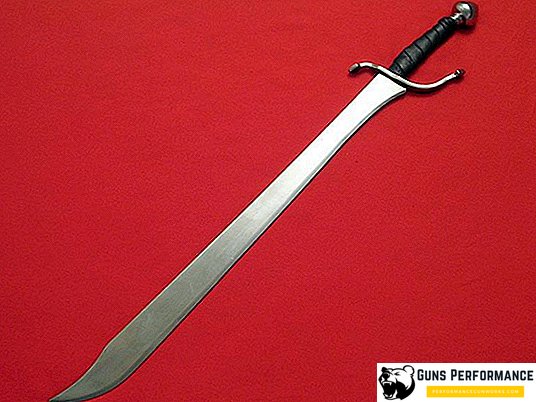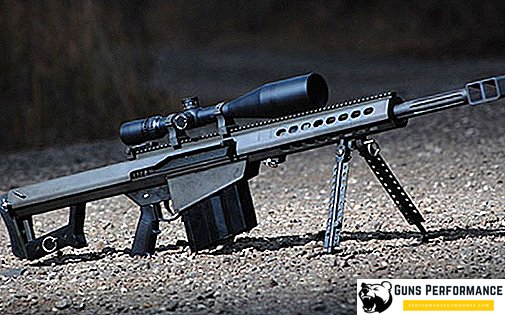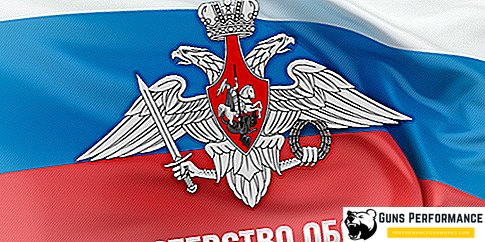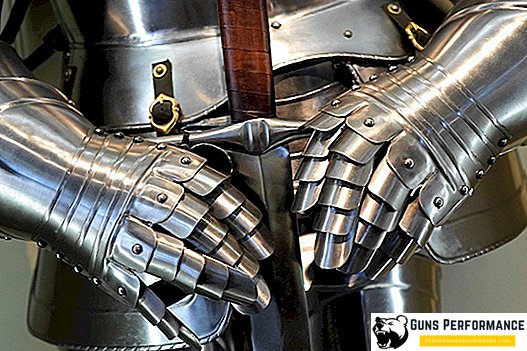
Falchions are one of the most common weapons of the Middle Ages. Together with peasant cleavers, this huge knife or sword was often used to protect life and property, but unlike large household knives, the falchion is a real military weapon that was not used for agricultural work. If the sword for a warrior in all ages was a kind of symbol, then the cleaver was a real hard worker who had to do all the "dirty" work.
General Falcon Information

Falchion was a very popular weapon among European mercenaries, for whom the sword was too expensive, but the perekovanny peasant cleaver was quite accessible. It is for this reason that images of falchion are often found in medieval frescoes. Due to its low cost, weapons such as a falchion, more like a sword or sword, were popular even among rather poor knights.
The history of the existence of this weapon can be traced from about the 10th century, thanks to numerous finds. The most popular are the following:
- Falchion of Thorpe. This weapon dates from the 13th century and is an example of a typical weapon of ordinary warriors of the time. Its thickness was not more than 2.5 mm, which suggests that although it looks like a sword, it is a typical cleaver according to its characteristics;
- Library Oxford 1340 type. This weapon dates from the 14th century and was found near Oxford.
Despite its formidable appearance, the falchion could only serve to fight the lightly armored warriors, and the knight in armor he was practically not afraid, since the straight or slightly curved thin blade of the falchion did not cut through the metal armor.
Design features of the medieval falchion

What are the features of this popular weapon? They are as follows:
- The blade length of the average falchion was about 750 mm;
- The blade itself is single-edged, that is, sharpening only on one side of the blade;
- Forms of falchion is a straight or slightly curved blade at the end.
The falchion's blow had considerable power, since the blade had an extension at the end, which gave the weapon tremendous penetrating power. True, this form did not help to pierce the iron armor, since the thickness of the blade was insufficient. Thus, this weapon perfectly suited for lightly-armed infantry, which no one would throw into battle against armored knights.
Since the form resembles an oriental saber, some researchers believe that these weapons lead their ancestry from oriental weapons, which fell into the hands of the Crusaders. In fact, by taking a falchion and such a simple weapon as a peasant's cleaver, one can immediately see their undoubted similarity. It becomes clear that a combat weapon is a modernized peasant knife, reforged to increase its length and received a guard and a hilt like those of swords.
In later times, heavy type falchions became popular - later cut-cords, which had thick blades and more resembled boarding sabers. According to medieval sources, one can trace the evolution of the falchion of this type.
In spite of the fact that the falchion had a simple construction, often there are samples with decorated top of the arms, so you can judge about the combat past of these weapons.
The advantages and disadvantages of falchionov

Due to the fact that this weapon was very popular, many samples of false types of various types were found. The advantages of this weapon were as follows:
- Ease of manufacture;
- The possibility of reworking an ordinary peasant cleaver into a falchion, by reforging and changing the shape of the edge of the blade;
- The displaced center of gravity and the heavy weight of the weapon made it possible to strike quite strong blows;
- Maneuverability and efficiency in a limited space;
- Since the weapon was held with one hand, the second remained free for the shield or the second weapon.
Despite a lot of advantages, the falchion had several serious drawbacks:
- While the sword could strike stabbing, the falchion of any of the main types was a purely slashing weapon. They could only be pounded by an unprotected enemy;
- If a warrior fought one-on-one with an enemy armed with a sword, then for victory he had to be much more experienced, since with a short weapon it was much harder to strike a fatal blow;
- The need for a wide amplitude of movements for striking greatly reduced the effectiveness of the falchion in dense formation.
From the medieval treatises, which we can trust, it is known that the experienced warriors, who began to fight the falchion, tried to change it to the sword in the first successful battle.
The main users of the falchions and the secret of the popularity of these weapons

This weapon was very popular in European feudal armies. Weapons of this type armed mercenaries and the feudal militia, which was obliged to act together with their lords, knights. In addition, the falchions had townspeople, rich peasants and vagrant mercenaries who did not disdain to looting on the roads.
The popularity of this weapon was provided by the following factors:
- Ease of manufacture;
- Low price;
- Ease of learning the art of combat with these weapons.
If a physically weak fighter was given a spear, then the more powerful warriors were armed with falchions. The effectiveness of this weapon has been repeatedly confirmed in numerous medieval battles, the Hundred Years War has vividly demonstrated this. Then a simple English people, armed with these weapons, was able to beat the French knights.
Types of Falchion

If you look at how this weapon is classified, you can see that there are only two types:
- Classic falchion. This weapon is most often found on historical engravings of the time. Most likely, it was they who armed most of the medieval mercenaries. This falchion straight with unsharpened butt blade. It is believed that this weapon is a direct descendant of Scramasaks, but the battle knife of the ancient Germans had a blade that was at least twice as thick;
- A curved falchion that resembled Arab swords. This weapon partially sharpened the first half of the blade on the other side of the blade. This weapon gained popularity only in the 15-16 centuries.
Most likely, the form of the falchion was determined by both the fashion tribute and the preferences of its owner.
Falchion - truth and myths

There are several myths associated with this weapon that are only half true. For example, it is widely believed that the falchion was always made of low-grade steel and never used by rich nobles. The second myth says that only mercenaries and robbers fought with falchions. In fact, initially this weapon was really of poor quality, but often the mercenaries who used these blades in battle, managed to become elite warriors, and some later could even become knights.
Naturally, the warrior will not part with his favorite weapon, but since its quality did not match the status of the owner, it was necessary to make better weapons. Subsequently, the warrior taught his children to use these weapons, and the falchion became a real family weapon. In some European museums preserved rich specimens, decorated with engraving and gilding.
The second fact, which says that these knights were not disdained by noble knights, is the documents that have survived to the present day, in which the technique of owning a falchion is described in detail. These documents were found in the libraries of old knightly families in Europe. According to them, the technique of ownership of the battlefield was studied from 7 years. At the age of 14, the future knight already perfectly mastered weapons and began to study various secret blows and techniques that were never used in public duels.

Although the falchion remained an ordinary weapon, which was not famous in the poems about knights, its contribution to the history of the Middle Ages should not be underestimated. According to documentary sources, you can find out that the feudal militia and the mercenaries, who together made up the majority of the medieval army, were armed with precisely these weapons, and it was even more popular than the ax. Interestingly, in Russia, these blades were virtually unknown, as there reigned an ax, which in the end gave way to the saber.












